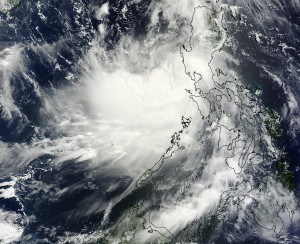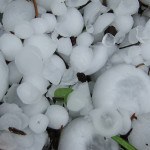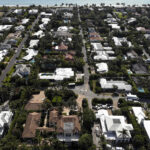RMS reports that on Friday, July 19 Super Typhoon Rammasun, one of the strongest to hit southeast China in recent years, made three landfalls in the provinces of Hainan, Guangdong, and Guangxi.
Rammasun has significantly impacted the Philippines, southeast China and Vietnam. Rammasun brought strong winds, heavy rain, and storm surge to some coastal areas with close to 300,000 buildings damaged in the affected countries.
In China, damaging wind and floods have destroyed at least 37,000 homes and ravaged 468,500 hectares of crops in Hainan, Guangdong and Guangxi provinces. Virtually all brick-and-tile houses in the town of Wengtian, Hainan were either destroyed or had their roofs removed. Within a 24 hour period up to 15 inches of rain fell in the city of Haikou; the week before Rammasun hit, the southeastern provinces were reportedly experiencing heavy floods, which have only been exacerbated by the typhoon.
“Typhoon-related flood, which includes both rainfall driven and coastal flooding, contributes as much as 80 percent to typhoon average annual loss in China, with the coastal provinces driving the loss,” said Nikki Chambers, hazards scientist at RMS. “July to October are the most active months for typhoons in this region. On average 6 typhoons make landfall a year in China and typhoon Rammasun highlights the importance of accounting for all sources of typhoon losses, of which flood is the main driver.”
Insurance penetration is extremely low in China particularly for residential risk, slightly higher for commercial and industrial lines of business. On average, about 15 percent of property risk in China is insured. Insurance penetration varies by province; Hainan has one of the lowest insurance penetrations in China. Guangdong is one of the more prosperous provinces; it is the second largest province for property insurance purchases, with 41.7 billion yuan (US$6.8 billion) in direct premiums for property insurance in 2012, according to the China Insurance Regulatory Commission.
Philippines
The typhoon wreaked havoc earlier in the week in the northern Philippines, which is still rebuilding after Typhoon Haiyan. Rammasun made its first landfall in the largely agricultural provinces south of the capitol Manila, leaving 94 people dead, and over 111,000 houses damaged, of which nearly 28,000 have been totally destroyed and 83,000 have been partially damaged.

Image Credit:
NASA Goddard MODIS Rapid Response Team
Based on analysis from the RMS Philippines Economic Exposure Database, the impacted provinces in the Philippines from Rammasun contains over $100 billion dollars of insurable commercial building exposure, $80 billion of industrial building insurable exposure, and over $215 billion of residential building exposure. Based on the RMS Philippines industrial cluster catalog, industry is clustered around metro Manila and in areas to the north and south of the capital in Central Luzon, which are located within the affected area of Rammasun. The insurance penetration rates in the Philippines is relatively low, though higher for commercial and industrial lines of business and will be centred around Manila and the industrial zones.
Vietnam
In northern Vietnam, Typhoon Rammasun made landfall Saturday morning, causing heavy flooding. At least eight people have died and it has affected more than 6,000 homes. The typhoon has damaged 3,300 hectares of rice and other crops and disrupted traffic in the region.
Typhoon, Matmo, with maximum winds of 150km/h, is now threatening the area ravaged by Rammasun.
Source: RMS
Was this article valuable?
Here are more articles you may enjoy.

 California Chiropractor Sentenced to 54 Years for $150M Workers’ Comp Scheme
California Chiropractor Sentenced to 54 Years for $150M Workers’ Comp Scheme  Report Using Aerial Imagery Keys in on Hailstorm Risks to Colorado Homes
Report Using Aerial Imagery Keys in on Hailstorm Risks to Colorado Homes  UnitedHealth Data Leak May Affect ‘Substantial’ Swath of U.S.
UnitedHealth Data Leak May Affect ‘Substantial’ Swath of U.S.  Florida’s Home Insurance Industry May Be Worse Than Anyone Realizes
Florida’s Home Insurance Industry May Be Worse Than Anyone Realizes 